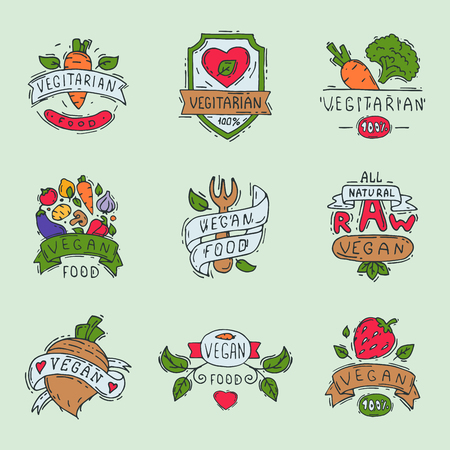Introduction to British Supermarket Labels
When stepping into a British supermarket, shoppers are greeted with an impressive array of food products, each adorned with colourful labels and information panels. For anyone aiming to make healthier choices—particularly when it comes to sugar and salt—understanding these food labels is crucial. In the UK, there are strict food labelling standards designed to help consumers make informed decisions about what they eat. The government has established regulations that require clear nutritional information, including the content of energy, fat, saturated fat, carbohydrates, sugars, protein, and salt per 100g or per portion. In addition to the legally mandated nutrition table on the back or side of packs, most British supermarkets also use front-of-pack labelling schemes such as traffic light labels. These visual cues offer at-a-glance guidance on whether a product is high (red), medium (amber), or low (green) in sugar, salt, and fat. By becoming familiar with these systems, health-conscious shoppers can better navigate supermarket aisles and select products that align with their dietary goals, especially when trying to manage sugar and salt intake for overall well-being.
2. The Traffic Light System Explained
When you stroll through the aisles of any British supermarket, youll notice a series of brightly coloured labels on the front of most packaged foods. This is the UK’s traffic light system for nutrition—a quick-reference guide designed to help shoppers make healthier choices at a glance. These labels break down key nutritional components: sugar, salt, fat, and energy (calories), using a familiar colour-coding scheme of red, amber, and green.
Understanding the Colours
The colours act as instant visual cues:
| Nutrient | Green (Low) | Amber (Medium) | Red (High) |
|---|---|---|---|
| Sugar | ≤5g per 100g | >5g to ≤22.5g per 100g | >22.5g per 100g |
| Salt | ≤0.3g per 100g | >0.3g to ≤1.5g per 100g | >1.5g per 100g |
| Total Fat | ≤3g per 100g | >3g to ≤17.5g per 100g | >17.5g per 100g |
| Saturates (Saturated Fat) | ≤1.5g per 100g | >1.5g to ≤5g per 100g | >5g per 100g |
| Energy (Calories) | Displayed as kcal/kJ, no colour coding but always present for reference. | ||
How to Use the Traffic Light System in Practice
If you’re aiming to cut back on sugar or salt, look for more green and amber indicators and try to limit products with red labels in those categories. For example, a breakfast cereal with a red label for sugar but green for salt might not be your best choice if you’re watching your sugar intake. The system is specifically tailored for quick decisions—ideal when you’re in a rush or comparing similar products side by side.
A Note on Portion Sizes and Real-World Application
The values are based on standardised portions or per 100 grams/millilitres, making it easier to compare products even if their serving sizes differ. However, always check both the colour and the actual numbers: sometimes a food can have an amber label but still contain more sugar or salt than you’d expect if the portion size is large.

3. Interpreting Sugar and Salt Content
Understanding how to read and interpret sugar and salt content on food packaging is crucial when shopping in British supermarkets. The UK uses a traffic light labelling system on many products, which offers at-a-glance guidance: red for high, amber for medium, and green for low levels of sugar and salt. While this colour-coded system is helpful, its essential to look beyond the colours to the detailed nutritional table usually found on the back or side of the pack.
Reading Serving Sizes
One common pitfall is misreading serving sizes. Many British products list nutritional values “per 100g” and “per serving.” However, serving sizes can be surprisingly small—sometimes half a biscuit or just a few crisps—which means it’s easy to underestimate your intake. Always check what constitutes a serving and adjust calculations if you’re likely to eat more than this amount.
Hidden Sources in Everyday Foods
Sugar and salt aren’t just found in obvious places like sweets or salted crisps. In British supermarkets, you’ll discover significant amounts lurking in items such as ready meals, breakfast cereals, soups, sauces, and even bread. For example, some popular British baked beans can contain both added sugars and salt. Similarly, store-bought sandwiches may appear healthy but often pack more salt than expected.
Evaluating Labels Effectively
When comparing products, use the per 100g values for a fair assessment across brands and types. As a rule of thumb in the UK: more than 22.5g of sugar or 1.5g of salt per 100g is considered high; less than 5g of sugar or 0.3g of salt per 100g is low. Check ingredient lists for alternative names—glucose syrup, dextrose, maltodextrin (sugar), or sodium chloride, baking soda (salt)—as manufacturers sometimes disguise these components under different terms.
By honing your label-reading skills and being aware of British product quirks, you can make informed decisions that align with your health goals while navigating supermarket aisles with confidence.
4. Comparing Brands and Products
When you are standing in a British supermarket aisle, faced with an array of choices—Tesco’s own-label beans versus Heinz, or Sainsbury’s Basics against branded cereals—the food label becomes your best ally. Here’s how to use this information effectively to compare similar products, especially when weighing up own-label (supermarket) brands and well-known national brands.
Tips for Effective Comparison
- Check per 100g/ml values: Nutritional labels often give information ‘per serving’ and ‘per 100g’. Use the per 100g/ml columns for a fair comparison across different pack sizes and brands.
- Sugar and Salt in Focus: Pay particular attention to the sugar (‘of which sugars’) and salt content. British guidelines suggest less than 5g sugar and 0.3g salt per 100g as low, so use these as benchmarks.
- Beware of “Healthy” Claims: Just because a product is labelled ‘low fat’ or ‘organic’ doesn’t mean it’s low in sugar or salt. Always check the actual numbers.
- Own-Label vs National Brands: Supermarket own-label products (like Tesco, Sainsbury’s, Morrisons, Asda) often undercut branded items on price—but nutritional content can vary. Sometimes own-label options have less sugar or salt, but not always.
Typical Comparison Table
| Product | Sugar (per 100g) | Salt (per 100g) | Price (£/unit) |
|---|---|---|---|
| Tesco Baked Beans (own-label) | 4.7g | 0.6g | £0.40 |
| Heinz Baked Beans (national brand) | 4.7g | 0.6g | £1.00 |
| Sainsbury’s Cornflakes (own-label) | 8.0g | 1.0g | £0.55 |
| Kelloggs Cornflakes (national brand) | 8.0g | 1.1g | £2.00 |
Key Observations from the Table:
- The nutritional difference between own-label and national brands can be minimal—sometimes identical—yet price differences are significant.
- You can find nearly identical sugar and salt levels in both options; don’t assume one is healthier without checking the label.
- The only way to know for sure is by scrutinising the packaging each time you shop, as recipes do occasionally change.
Cultural Note: British Shoppers’ Habits
Many Brits are loyal to certain brands for taste or tradition, but there is a growing trend towards switching to supermarket own-labels for better value—especially when nutritional quality is comparable or even superior. Using clear label comparisons empowers you to make choices that suit both your budget and your health goals.
5. Making Smarter Choices in the Aisles
Shopping in British supermarkets can feel like a minefield when you’re trying to cut down on sugar and salt. Clever marketing, tempting deals, and colourful packaging often steer us toward less healthy options. Here are some practical strategies to help you navigate the aisles and make smarter choices:
Understand Marketing Terms
Food packaging is full of phrases like “reduced sugar”, “light”, or “no added salt”. While these sound promising, it’s important to check what they actually mean in a UK context. For example, “reduced sugar” means at least 30% less sugar than the standard product, but it may still be high in sugar overall. Always double-check the nutrition label rather than relying solely on front-of-pack claims.
Navigating Offers and Deals
British supermarkets are famous for their “Buy One Get One Free” (BOGOF), multibuys, and meal deals. These offers can encourage us to buy more processed foods, which often contain hidden sugars and salts. Before grabbing that offer, consider if you really need the extra portion or if it fits with your health goals. Opt for fresh produce deals when possible, and don’t be swayed by eye-level placement—supermarkets often put higher-sugar and salt products where they’re easiest to grab.
Read Beyond the Buzzwords
Terms like “healthy”, “natural”, or “farmhouse” are frequently used but aren’t regulated claims regarding sugar or salt content. Take an engineering approach: scrutinise the back-of-pack nutrition information instead of relying on buzzwords. Use the traffic light system as a quick check—look for more greens and ambers, and avoid reds where possible.
Batch Cooking and Planning Ahead
If supermarket ready meals seem convenient, remember they often come with higher levels of salt and sugar. Batch cooking at home using raw ingredients lets you control what goes into your food. Planning your meals ahead helps reduce impulse purchases of processed foods during your shop.
Summary Checklist
– Scrutinise labels beyond marketing terms
– Favour fresh produce over processed convenience foods
– Be mindful of offers that encourage overbuying
– Use the traffic light system as a guide
– Plan meals to avoid last-minute unhealthy choices
By staying alert to common supermarket tactics and arming yourself with label-reading skills, you can make choices that genuinely support a lower sugar and salt lifestyle—without feeling deprived in the British food landscape.
6. Useful Resources and Final Thoughts
If you’re keen to sharpen your skills in decoding food labels, there’s a wealth of reliable British resources at your disposal. The NHS website offers comprehensive guides on reading nutrition labels, including tips for spotting high sugar and salt products. For those interested in the finer details, the Food Standards Agency (FSA) provides up-to-date information on UK food labelling regulations and health campaigns such as “Salt Awareness Week.” The British Heart Foundation also publishes clear, jargon-free advice on interpreting traffic light systems and making heart-healthy choices.
For further reading, consider delving into government reports like “Reducing Sugar Intake: The Scientific Advisory Committee on Nutrition’s Recommendations” or exploring consumer advocacy groups such as Action on Sugar. These sources offer deeper insights into why cutting down on sugar and salt matters and provide practical strategies tailored to British shopping habits.
In wrapping up, remember that food labels are more than just numbers—they’re tools for taking charge of your own health. British supermarkets can be overwhelming with their array of options, but by understanding label information and using trusted resources, you’ll be well-equipped to shop mindfully. With every small change—choosing lower-sugar cereal, comparing salt content in ready meals—you’re making a positive impact for yourself and your family. Stay curious, use the available guidance, and don’t hesitate to ask supermarket staff or consult official UK websites if you’re ever uncertain. Mindful shopping is an ongoing journey, but every step counts towards a healthier future.

